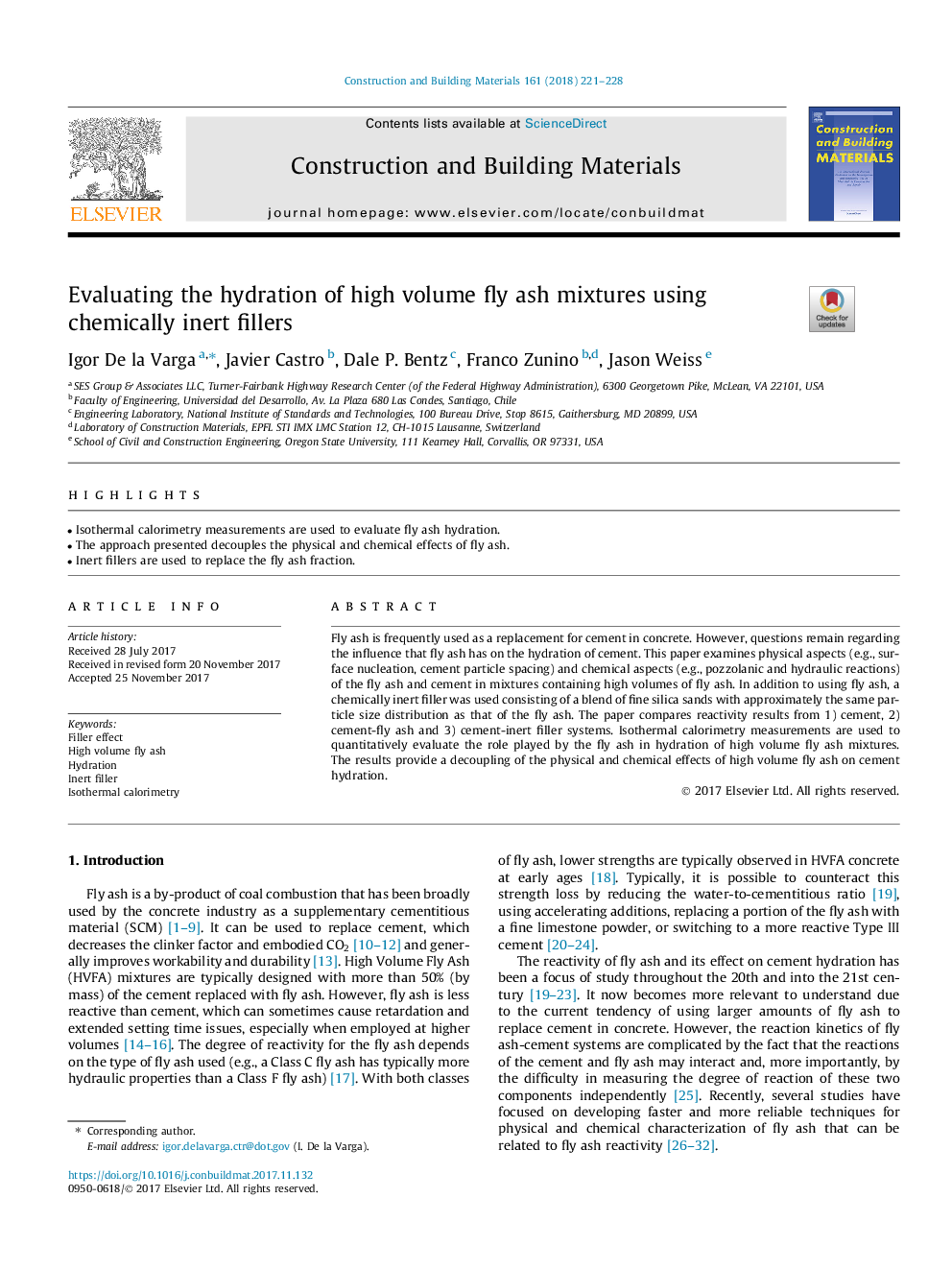| Article ID | Journal | Published Year | Pages | File Type |
|---|---|---|---|---|
| 6716743 | Construction and Building Materials | 2018 | 8 Pages |
Abstract
Fly ash is frequently used as a replacement for cement in concrete. However, questions remain regarding the influence that fly ash has on the hydration of cement. This paper examines physical aspects (e.g., surface nucleation, cement particle spacing) and chemical aspects (e.g., pozzolanic and hydraulic reactions) of the fly ash and cement in mixtures containing high volumes of fly ash. In addition to using fly ash, a chemically inert filler was used consisting of a blend of fine silica sands with approximately the same particle size distribution as that of the fly ash. The paper compares reactivity results from 1) cement, 2) cement-fly ash and 3) cement-inert filler systems. Isothermal calorimetry measurements are used to quantitatively evaluate the role played by the fly ash in hydration of high volume fly ash mixtures. The results provide a decoupling of the physical and chemical effects of high volume fly ash on cement hydration.
Related Topics
Physical Sciences and Engineering
Engineering
Civil and Structural Engineering
Authors
Igor De la Varga, Javier Castro, Dale P. Bentz, Franco Zunino, Jason Weiss,
